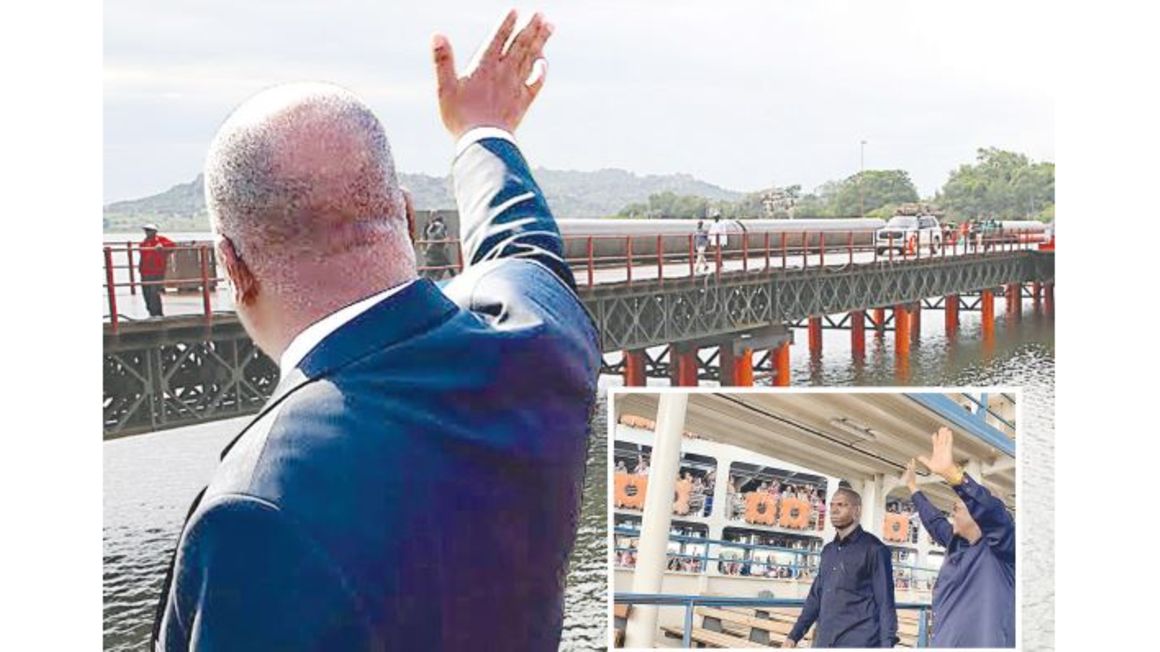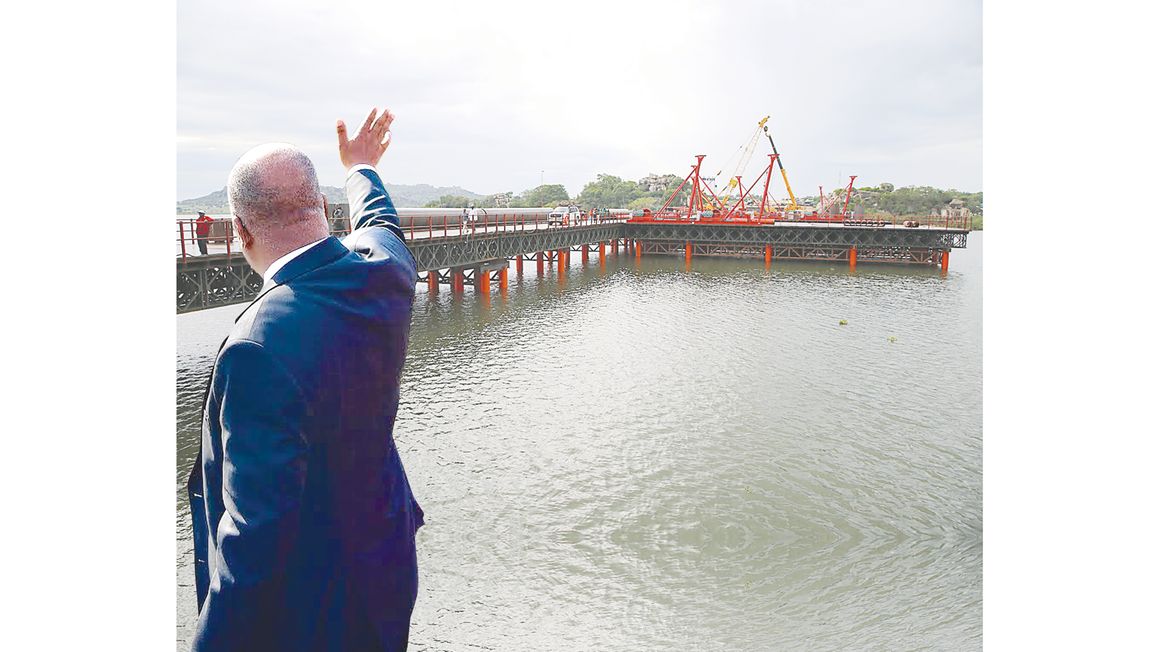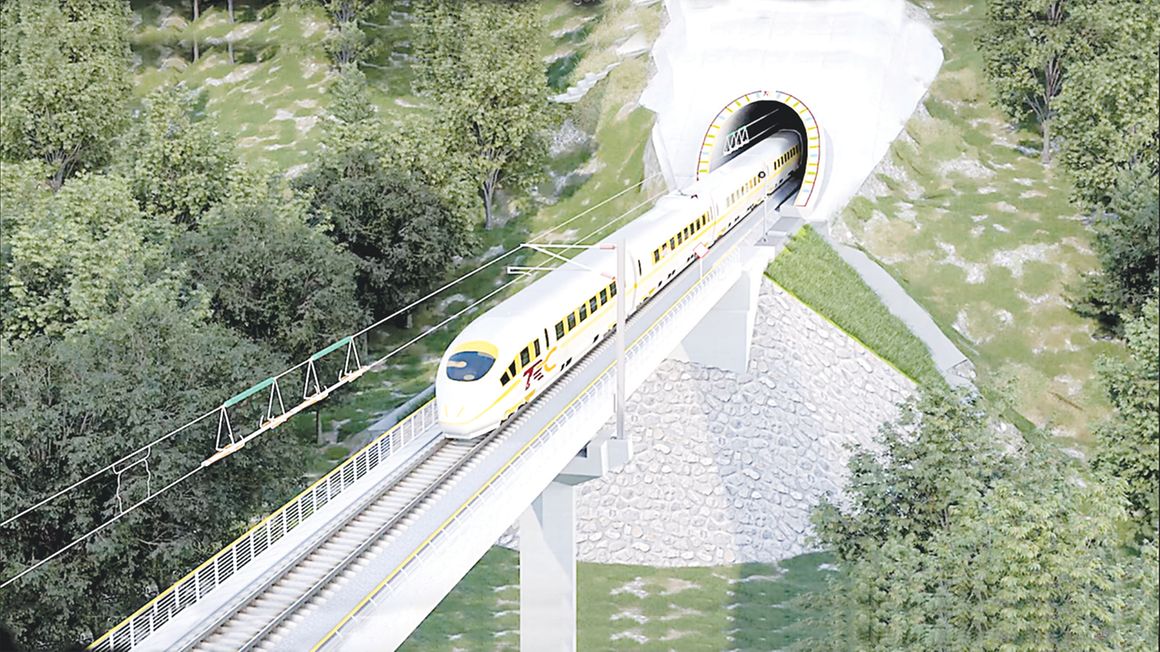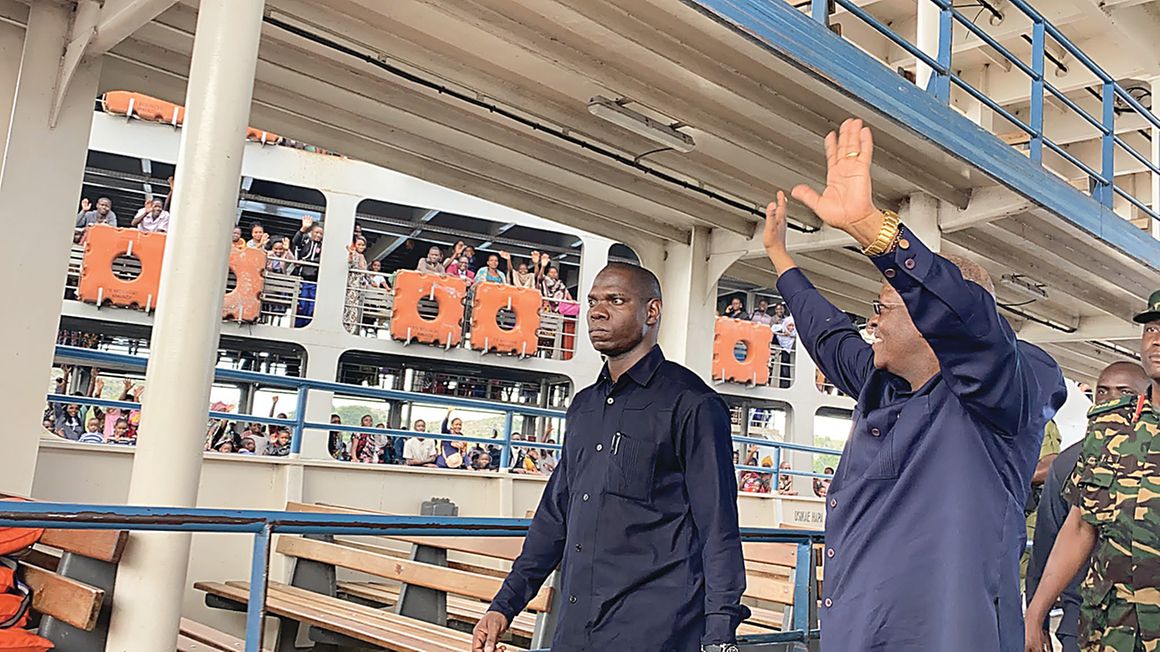
Mwanza. Improving the marine transport sector is one
of the pledges that were enshrined in the manifestos of the veteran
ruling Chama Cha Mapinduzi (CCM) party for the 2015 and 2020 elections.
In
the first five-year term of President John Magufuli (Nov. 5, 2015-Nov.
4, 2020) - and even after the elapse of the first 100 days of his
second five-year presidential term which formally begun on November 5,
2020 - several strategies continue to be implemented to improve marine
transport in the country.
To experts in economic issues, marine
transport and ports - if efficiently utilized in cooperation between the
government and the private sector - are among the driving forces for
the growth of the economy and development.
The economic development
that has been made in Singapore, Germany and The Netherlands is living
proof, as those countries have highly succeeded in strengthening the
marine transport sector.
For example, Germany has made huge strides
of economic development through its Hamburg Port without forgetting The
Netherlands that has used its Rotterdam Port to attain its goals of the
economic growth.
Tanzania is no exception as it is endowed with the
mass of waters and a number of ports after having its shares in Lake
Victoria, Lake Nyasa, Lake Tanganyika and the Indian Ocean.
So,
Tanzania has implemented a number of its projects that have resulted in
the improved marine transport sector that has contributed to making
Tanzania be placed among the countries that have attained the middle
income before 2025.
Through those strategies, the government has
invested over Sh152 billion in four transport projects in Lake Victoria
which is plied by Mv. Victoria.
Built in 1961, the vessel was recently renovated and renamed Mv. New Victoria Hapa Kazi Tu.
The
New Victoria - which was rehabilitated using more than Sh22 billion -
has been improved by over 80 percent after being fitted with two new
engines and modern equipment to boost its velocity.
The ship has already resumed its Mwanza-Kagera route, ferrying passengers and cargo.
The
Acting Chief Engineer of Marine Services Company Ltd (MSCL), Abel
Gwanafyo, says Mv. New Victoria’s installed two new machines with 960
kilowatts each have increased its speed rather than when it was with two
engines of 850 kilowatts each.
The Mv New Victoria captain, Samsoni
N’gwita, says the vessel now travels at between 15 and 16 knots an hour,
compared with the previous speed of between 8.5 and 9 knots.
“The
increased speed has actually reduced travel time between Mwanza and
Bukoba from between nine and 10 hours previously to between six and
seven hours currently,” says N’gwita.
Captain N’gwita was also at the
helm in the wheelhouse of the vessel before it was made to suspend
operations for the rehabilitation programme in 2014.
For his part,
the MSCL Chief Executive Officer (CEO), Eric Hamissi, revealed that the
government is also renovating Mv Butiama at a cost of over Sh5 billion.

Other projects
Another marine
transport project whose implementation started within 100 days of the
second term of President Magufuli after the October 28, 2020 polls is
the construction of a new ship named Mv. Mwanza Hapa Kazi Tu, with the
capacity of carrying 1,200 passengers, 400 tonnes of cargo and 20
vehicles.
Construction of the new ship is expected to be completed in May this year, at a cost of over Sh89 billion.
This
comes after completion of the construction of yet another project: a
floating dock at Mwanza South Port, costing over Sh36 billion.
Also,
improvements were made to Mv. Umoja which has also resumed its routes
between Mwanza South Port in Tanzania and Port Bell in Uganda after it
stopped its operations to undergo rehabilitation on August 21, 2009.
MSCL’s
Hamissi says the resumed operations by Mv Umoja fitted with special
rail tracks for loading and off-loading cargo, offer the opportunity of
ferrying 19 wagons at a go, equivalent to 1,200 tonnes of cargo.
The
projects have enabled reliable passenger and cargo marine transport to
resume in the Lake Zone regions with over 13 million residents. This
comes after 24 years of suspended operations following the sinking of Mv
Bukoba in the lake on May 21, 1996.
The projects are already playing
a significant role in driving the economy through the business
activities between Tanzania and the neighbouring countries of Kenya and
Uganda, which share Lake Victoria.
Tanzania occupies 49 percent of Lake Victoria while Uganda and Kenya do so by 45 percent and six (6) percent respectively.

Construction of the SGR between Dar es Salaam and Dodoma is slated to be completed on June 21 this year. The process of starting construction of the railway’s section from Mwanza to Isaka is already under way.
Standard Gauge Railway
Another
big strategic project being implemented by the fifth-phase government
of President Magufuli is the construction of the Standard Gauge Railway
(SGR) that will enable trains to travel at a speed of 160km per hour.
The SGR project, upon its completion, will have cost more than Sh7.1 trillion from internal sources.
The
Tanzania Railways Corporation (TRC) Director General, Masanja Kadogosa,
says each SGR wagon will have the capacity of carrying 130 tonnes,
equivalent to 14,000 tonnes for all the wagons conveyed in a single
trip.
“This capacity is equivalent to 500 lorries, each with a carrying capacity of 20 tonnes of cargo,” says Kadogosa.
Implementation
of the SGR project will create several opportunities for business
activities, temporary and permanent jobs - including 182 jobs for
Tanzanian engineers: equivalent to 46 percent of all employed engineers
working on the project.
Construction of the project between Dar es
Salaam and Dodoma is slated to be completed on June 21 this year, while
the process of starting construction of the SGR section from Mwanza to
Isaka is ongoing.
Speaking on implementation of the projects from the
first five-year presidential term to the first 100 days of the second
term of President Magufuli, a member of CCM’s National Executive
Committee (NEC) from Mwanza Region, Mr Jamal Babu, mentioned
construction of the 3.2km Kigongo-Busisi bridge that will cost over
Sh700 billion.
Mr Babu says the project, upon its completion, will leave an indelible mark in the history of the Dr Magufuli Presidency.
“The
bridge, when completed, will reduce the time taken to drive between
Kigongo in Misungwi District and Busisi in Sengerema District from
averagely 40 minutes to four,” says Jamal.
The bridge over Lake
Victoria links Misungwi and Sengerema districts. It will be the longest
bridge in the East and Central African region - and the sixth longest in
Africa.
The successful expansion of Mwanza Airport - which now
enables big planes to land and take off - was another ‘Magufuli’
project. It cost more than Sh96 billion.
Apart from the expansion of
Mwanza Airport, there are other big projects whose implementation begun
within the first 100 days of the second five-year term of President
Magufuli following the October 28 General Election in 2020.
Expansion
of the airport involved the construction of a passenger lounge, a
building for storing dry cargo and a cold storage building for
preserving refrigerated cargo.
The cold storage has the capacity of
preserving more than 15 tonnes of cargo at once - including fresh meats,
fish, fruits and greens being transported from Mwanza to local and
foreign markets.

Strategies of improving marine transport
In
the strategies to strengthen and improve the marine transport sector in
Tanzania, the government intends to construct nine new ships by
This should enable MSCL, to own a total fleet of 23 ships for both passengers and cargo - up from 14 ships currently.
According to Eng Hamissi, the strategies will involve the construction of a cargo ship that will be serving the Strip of High Seas.
“Apart from doing well on the African Great Lakes Region comprising Lakes Tanganyika, Nyasa and Victoria, MSCL plans to invest in marine cargo transport in the Indian Ocean are on because the big business of ships is cargo transport,” says Hamissi.
MSCL owns 14 ships and one boat, which provide transport services on lakes Victoria, Nyasa and Tanganyika.
On Lake Victoria, there are a number of ships, including Mv. New Victoria Hapa Kazi Tu, which carries 1,200 passengers and 200 tonnes of cargo; Mv Ukerewe (720 tonnes of cargo); Mv Serengeti (593 passengers and 350 tonnes of cargo) and Mv Butiama (200 passengers and 100 of cargo).
The other ships providing services on Lake Victoria are Mv Clarias with the capacity of carrying 293 passengers and ten tonnes of cargo; Mv Nyangumi, which is a tanker ship with the capacity of carrying 350 tonnes; Mv Umoja (1, 200 tonnes of cargo); Mv Malindi (120 tonnes of cargo) and Mv Wimbi with a capacity of carrying 120 tonnes of cargo.
Lake Tanganyika has Mv Liemba, which has a capacity ferrying 600 passengers and 200 tonnes of cargo; Mv Mwongozo (800 passengers and 80 tonnes of cargo) and MT Sangara that has a capacity of ferrying 410 tonnes of cargo.
On Lake Nyasa there are two passenger and cargo ships including Mv Iringa with a capacity of ferrying 125 passengers and five tonnes of cargo and Mv Songea that carries 213 passengers and 50 tonnes of cargo.
If all the 14 ships work at their full capacity each, they will be ferrying a total number of 3,970 passengers and 3,915 tonnes of cargo at a go on Lakes Victoria, Nyasa and Tanganyika.
According to Eng Hamissi, all the 14 passenger and cargo ships, are owned and operated by MSCL, which is a state-owned company. They were constructed between 1938 and 1988.
Economic opportunities
“Mwanza is strategically and economically a business city in the East and Central Africa Region because of its interactions with the countries of Rwanda, Uganda, Burundi and D R Congo (DRC).
This is why the government is implementing big projects in the transport sector,” says Mwanza Regional Commissioner John Mongella
According to Mr Mongella, due to the importance of Mwanza geographically, logistically and economically, the government is not only implementing marine transport projects.
It is also implementing railway transportation projects, including infrastructure and the purchase of machinery and equipment that is needed for the Standard Gauge Railway (SGR) from Dar es Salaam to the Mwanza, where the expansion of Mwanza Airport has already been completed.




No comments :
Post a Comment